Breathtaking snow mountains, ancient towns that feel like movie sets, and lakes so still they look like mirrors…Before this trip, I’d never been to China, but I’d always heard about how beautiful it was. Yunnan was my first ever China destination, and it made me fall in love with the country. Everything was so stunning, and the best part was that it’s just a short 4-hour flight from Singapore.
If you’re looking for an epic one-week escape that combines nature, culture, and great food, here’s my 7D6N Yunnan itinerary covering Lijiang, Shangri-La, Lugu Lake, and more!
Also read: What Apps to Download Before Travelling to China
Day 1: Singapore → Kunming
Arrival in Kunming
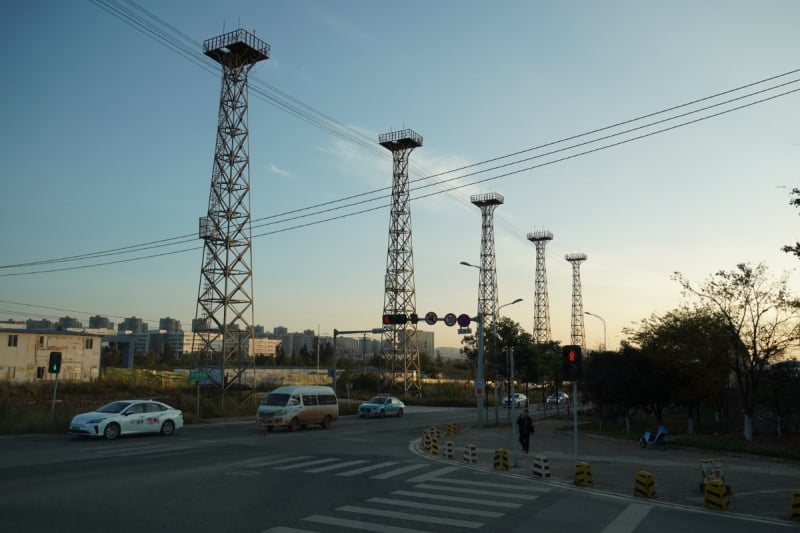
My first view of Kunming
The trip officially kicks off with a flight into Kunming, often called the “City of Eternal Spring” because of its mild year-round weather. Since our flight arrived in the evening, Day 1 was kept simple: check in, have dinner, rest up, and mentally prep for the week ahead.
Tripzilla Tip: The altitudes in Yunnan start rising pretty quickly after Kunming, so it’s not a bad idea to take this first night easy and let your body adjust slowly.
Day 2: Kunming → Lijiang (via Dali)
Hitting the road: from Kunming to Lijiang
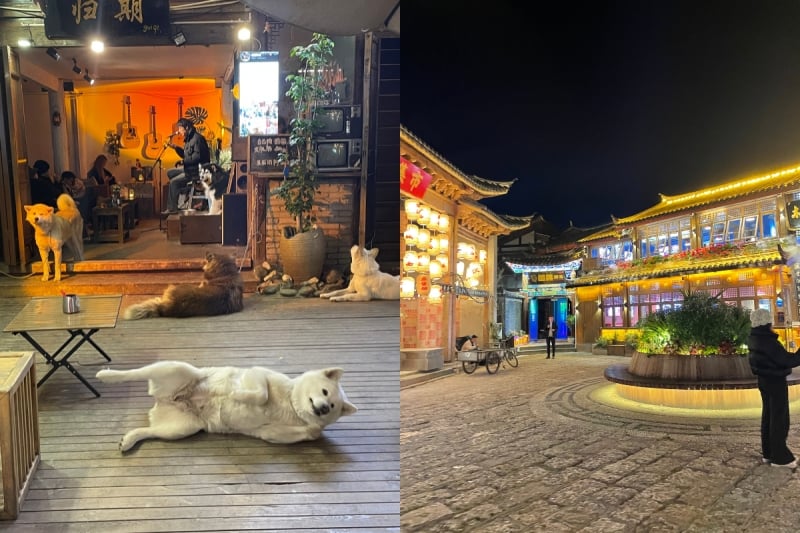
This area is on a hill, and there are some alleys that get pretty steep!
The real adventure begins on Day 2 as we start the scenic drive up towards Lijiang, with a quick stop in Dali along the way. Even just the drive itself was absolutely beautiful. I was having my main character moment driving past hills, valleys, and mountain backdrops to a 1975 album, and that honestly already made me wonder why more people don’t talk about Yunnan.
Tie-dye DIY at Zhoucheng Village
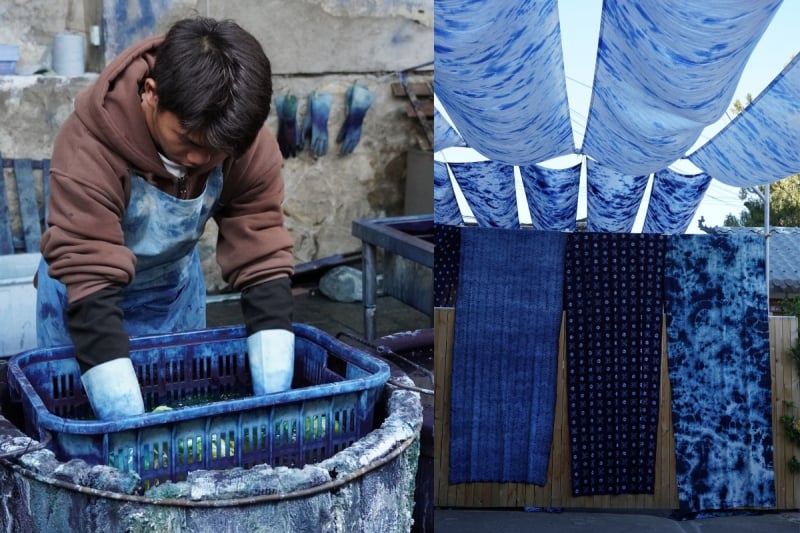
There were beautiful cloth dye patterns everywhere.
Our pitstop in Dali brought us to Zhoucheng Village, where we got to try our hand at traditional cloth dyeing. It’s a local craft that’s been passed down for generations. The process is simple enough that even first-timers can manage (with some help), and you get to bring home a very wholesome DIY souvenir.
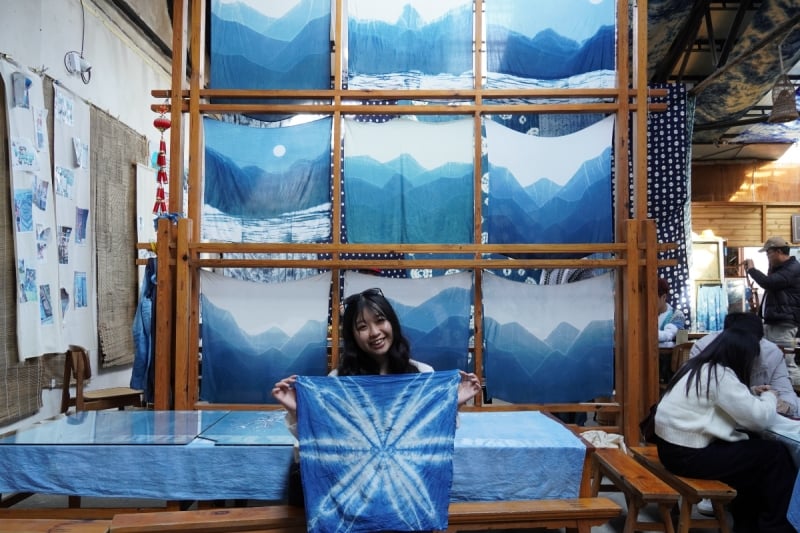
I chose to do a snowflake design, but mine kinda looked more like some molecule. Still pretty though!
Honestly, it was quite humbling seeing the locals casually folding, tying, and dyeing intricate patterns while we struggled to get our pieces evenly dipped. But I was still pretty satisfied with my end product!
Day 3: Lijiang — Jade Dragon Snow Mountain, Blue Moon Valley & Impression Lijiang Show
Visiting Jade Dragon Snow Mountain (玉龙雪山, Yulong xueshan)
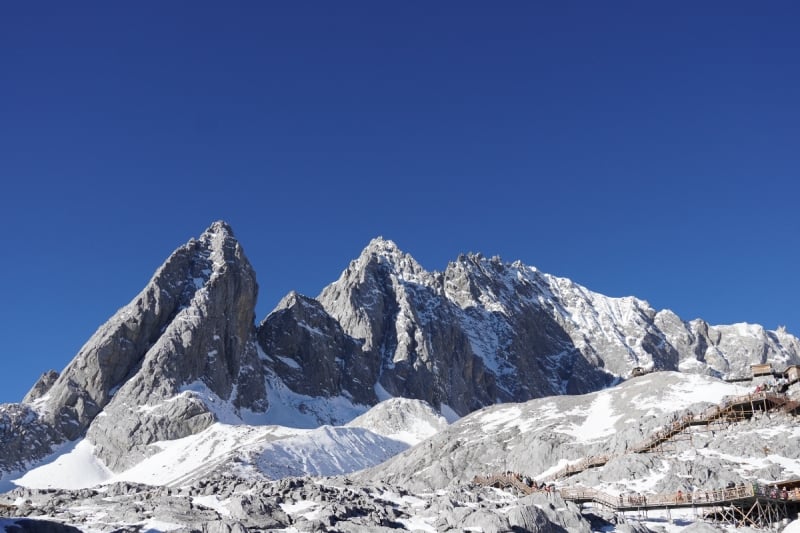
We were lucky enough to be able to still catch the snow caps of the mountain.
We officially start exploring Lijiang. A beautiful town, with the Jade Dragon Snow Mountain in the background. This beast of a mountain has 13 peaks, and while the highest point isn’t open to the public, you can take a cable car up to 4,506m, followed by a short climb to Glacier Park at 4,680m.
Warning: Altitude sickness is very real here.
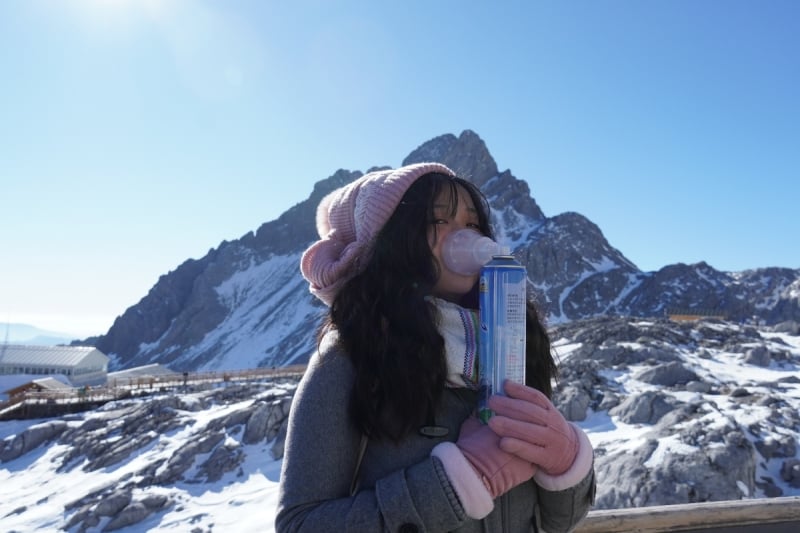
I was quite literally breathless.
You’ll see people carrying portable oxygen cans everywhere. I felt the effects once we got higher, and was constantly reaching for the bottle. But the views? Absolutely worth it. Standing in front of the massive blanket of snow felt like being inside a Game of Thrones set, minus the White Walkers.
Blue Moon Valley (蓝月谷, Lanyue gu)
Right at the foot of the mountain is Blue Moon Valley, sometimes called the White Water River. The water here has this insane turquoise-blue colour that honestly looks photoshopped in real life.
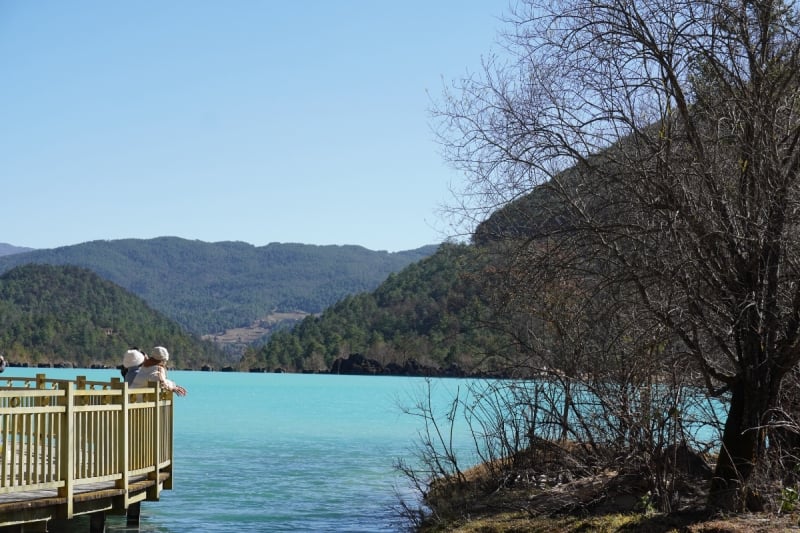
This photo has not been edited, the colours were this stunning in person.
There’s also a Naxi legend that says couples who stand barefoot in the freezing river during winter will be blessed with everlasting love. (I did not test this personally, but good luck if you do.)
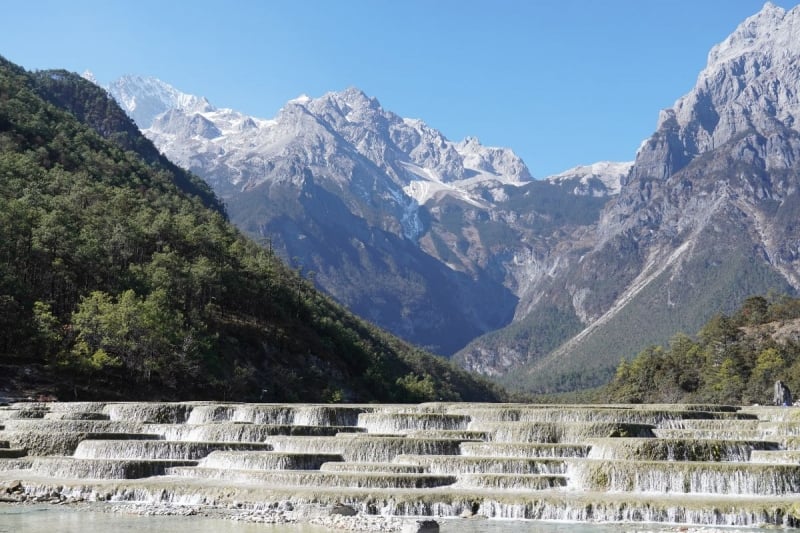
This scenery reminded me of New Zealand.
Impression Lijiang Show
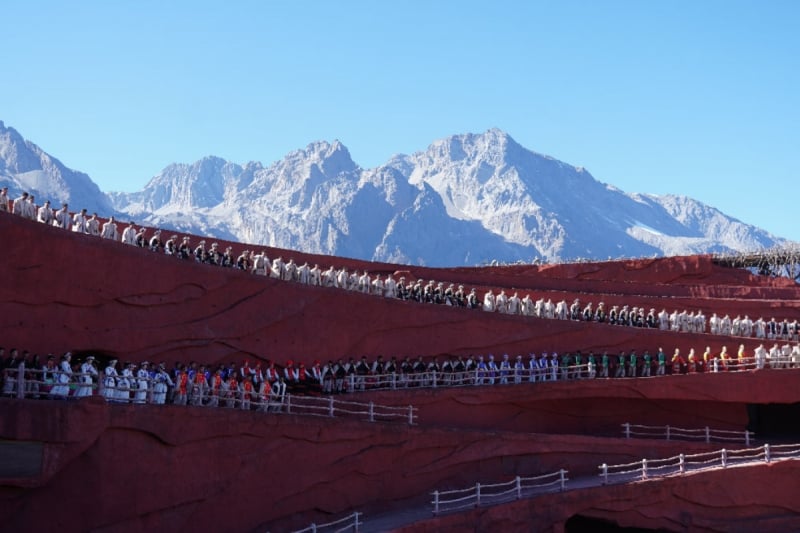
This show was so epic, I would re-watch it.
After all the snow and scenic views, we ended the afternoon with the Impression Lijiang show. It’s an open-air performance directed by Zhang Yimou (the director of many famous Chinese films like Hero), featuring over 500 local performers set against the actual backdrop of Jade Dragon Snow Mountain.
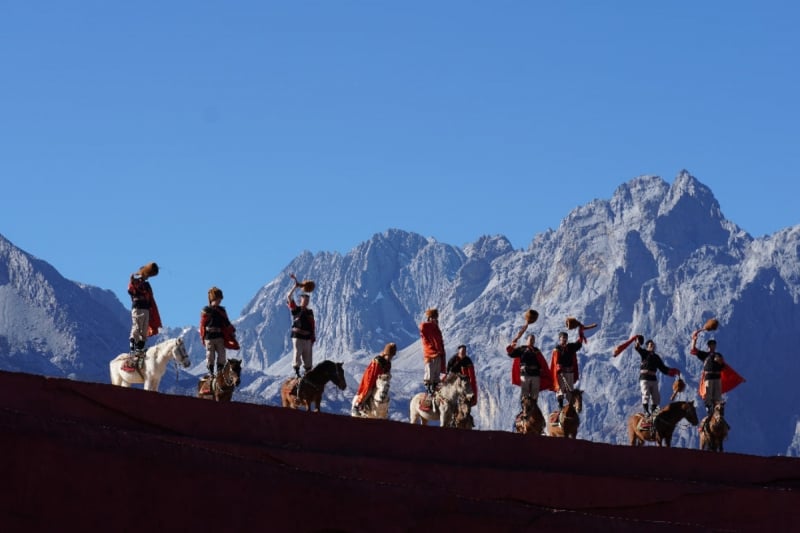
As a lover of horses, this was my favourite segment!
Even though it’s entirely in Chinese, there were two screens on each side of the stage, with English and Chinese subtitles. But even without the subtitles, the visuals and music make it easy to follow. Plus, seeing so many locals (many from nearby villages) performing against the mountains was honestly very surreal.
Day 4: Lijiang → Lugu Lake
Drive to Lugu Lake (泸沽湖, Lugu hu)
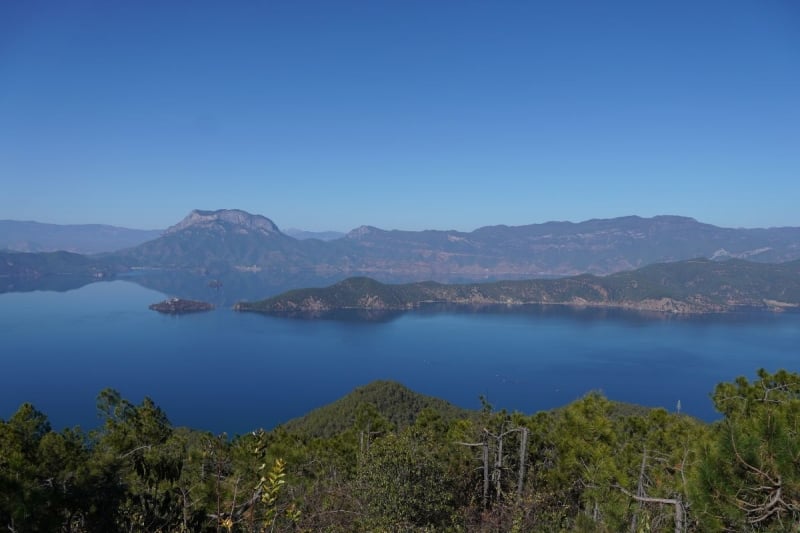
Once again, I did not edit this photo; it looked exactly like this.
The next morning, we hit the road again towards Lugu Lake, about a 4-5 hour drive from Lijiang. The journey itself was, again, very scenic. We occasionally stopped to take a photo of the winding mountain roads and rolling hills. Though the drives between the destinations in Yunnan are pretty long, I’d argue that the journey themselves are an attraction of sorts.
Liger viewing platform & first glimpses of Lugu Lake
Before reaching our hotel, we made a quick stop at the Liger viewing platform. It’s one of the best places to catch panoramic views of Lugu Lake for the first time. That moment when you see the lake open up from above? Magical.
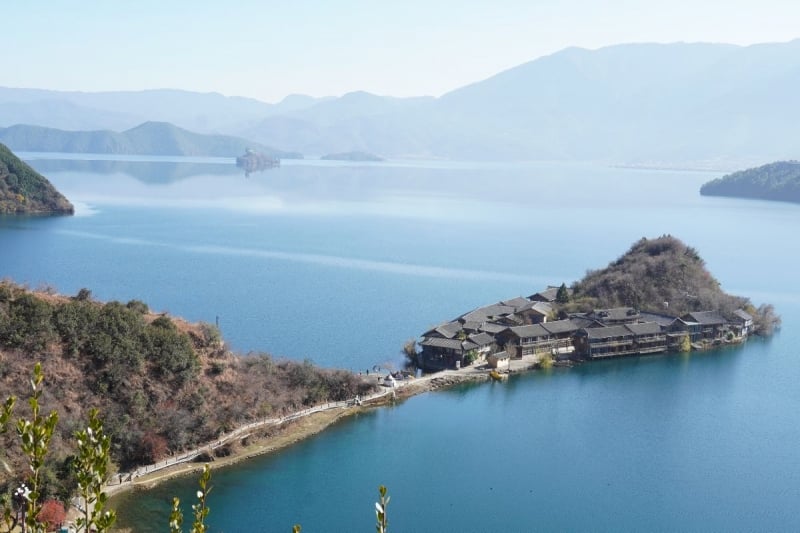
The shape of this little islet was pretty cool.
Mosuo cultural performance & bonfire night
At night, we joined a local Mosuo cultural performance and bonfire party. The Mosuo people are known for their matriarchal culture, which was super fascinating to learn about (did you know that the Mosuo people are not raised by their fathers, but their uncles instead?). One of the main highlights here, other than learning about a new culture, was also the dance performance around the bonfire with everyone under the stars. Very small-town romcom energy.
Day 5: Lugu Lake → Lijiang → Shangri-La
Morning boat ride on Lugu Lake
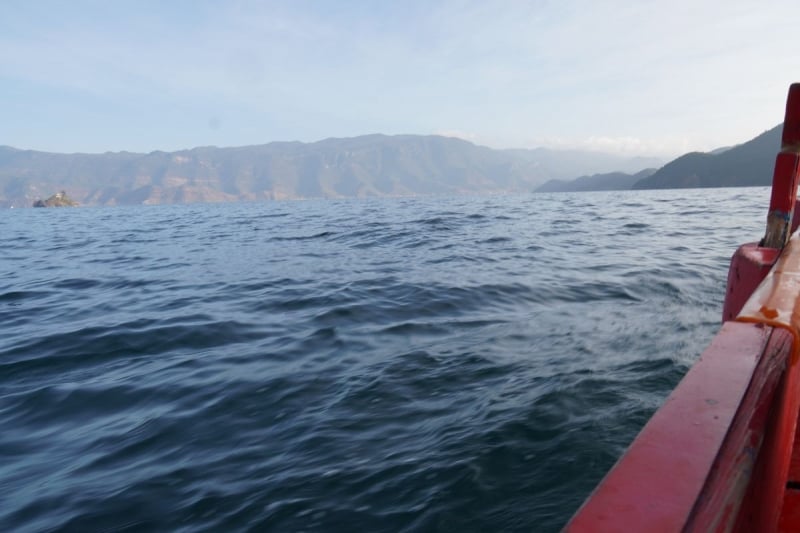
This was the only photo I took before I kept my camera in fear of the water getting onto it.
We kicked off the day with a peaceful wooden boat ride across Lugu Lake. Honestly, this might have been one of my favourite moments from the trip — the water was glassy and still, with the mountains perfectly reflected on the surface like a painting. Interestingly, motorised boats aren’t allowed here to help keep the water pristine. Since Lugu Lake is a headwater, any pollution would affect the villages downstream that rely on it for their water supply.
Along the way, we passed by small islands like Liwubi Island and even made a stop at Riku Temple. The boatman also sang a few traditional Mosuo songs while rowing, which just added to the whole vibe.
Back to Lijiang: Black Dragon Pool & Lijiang Old Town
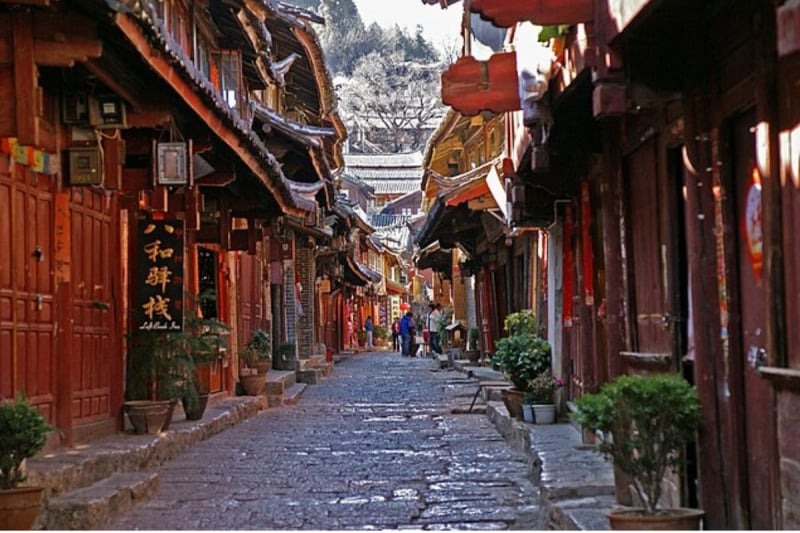
Image Credit: ChiralJon via Wikimedia Commons
After returning to Lijiang, we made two quick stops before leaving for Shangri-La:
-
Black Dragon Pool (黑龙潭): A classic photo spot with Jade Dragon Snow Mountain framed perfectly behind the pavilion. Legend says a single black dragon lives in the pool, protecting the city.
-
Lijiang Old Town & Sifang Street: Even though it can feel touristy, walking through the cobbled streets, canals, and little shops still has a kind of old-world charm that’s hard to replicate.
[Image: your Black Dragon Pool or Old Town photo here]
Drive to Shangri-La
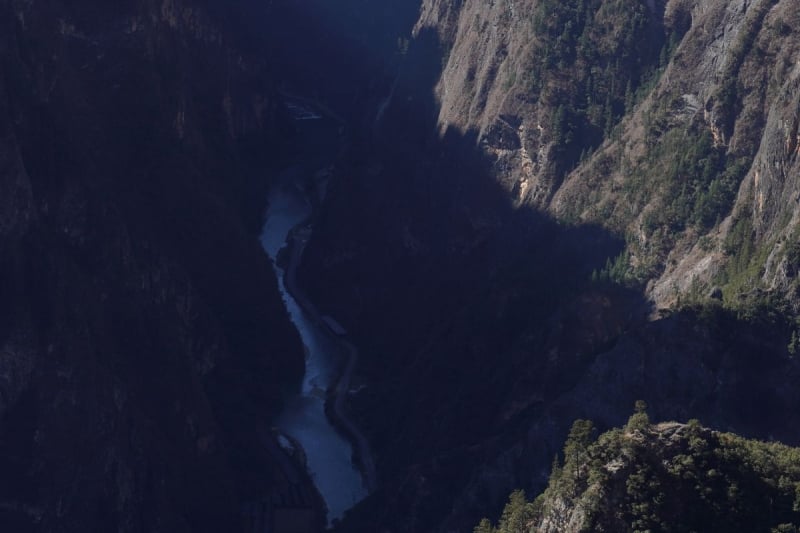
The drives in Yunnan really make me feel like such a main character.
From Lijiang, it was about a 2.5–3 hour drive to Shangri-La. As you drive higher, you’ll notice the landscape slowly shifting. More Tibetan prayer flags, wider grasslands, and higher altitudes. By the time you reach, you’re already at about 3,200m elevation. We were advised not to take showers on the first night there due to the high elevation. Apparently, it would make you more susceptible to high-altitude sickness.
Day 6: Shangri-La → Balagezong Scenic Area
Songtsamlin Monastery (松赞林寺, Songzan lingsi)
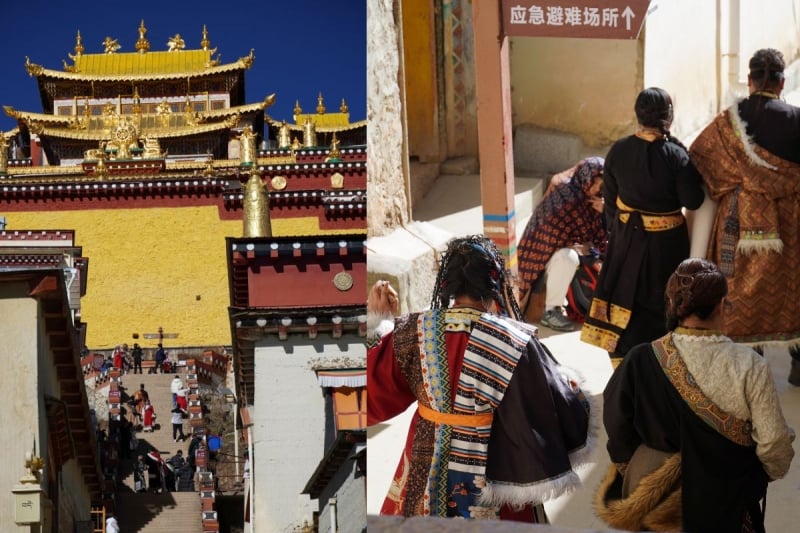
I was surprised by how similar this place looked to Tibet.
Our first stop in Shangri-La was the iconic Songtsamlin Monastery (sometimes called “Little Potala Palace”) because it resembled the one in Lhasa. The entire complex is massive, built on a hillside with golden rooftops gleaming in the sun.
If you climb all the way up, you’ll get an amazing panoramic view of the surrounding plains and villages. Just pace yourself, though, the high altitude will remind you that you’re nearly 3,300m above sea level.
Dukezong Ancient Town & Prayer Wheel
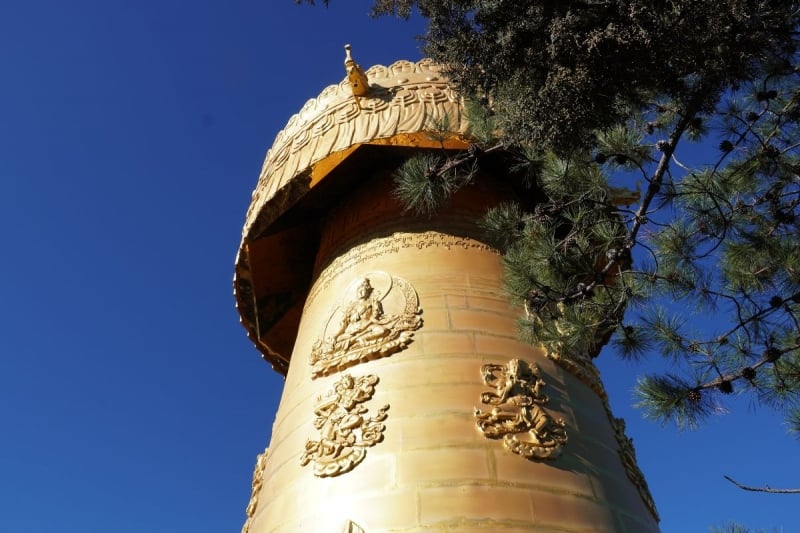
This wheel was very heavy. Be warned.
Next, we visited Dukezong Ancient Town, where you’ll find the famous Guishan Prayer Wheel, which is supposedly the largest prayer wheel in the world. It takes several people to turn it (we tried and barely managed a few spins).
Even though the town was hit by a fire a few years back, much of it has been restored, and it still retains a very laid-back Tibetan vibe with plenty of small cafes, local handicrafts, and scenic rooftop viewpoints.
Balagezong Scenic Area (巴拉格宗风景区, Balagezong fengjing qu)
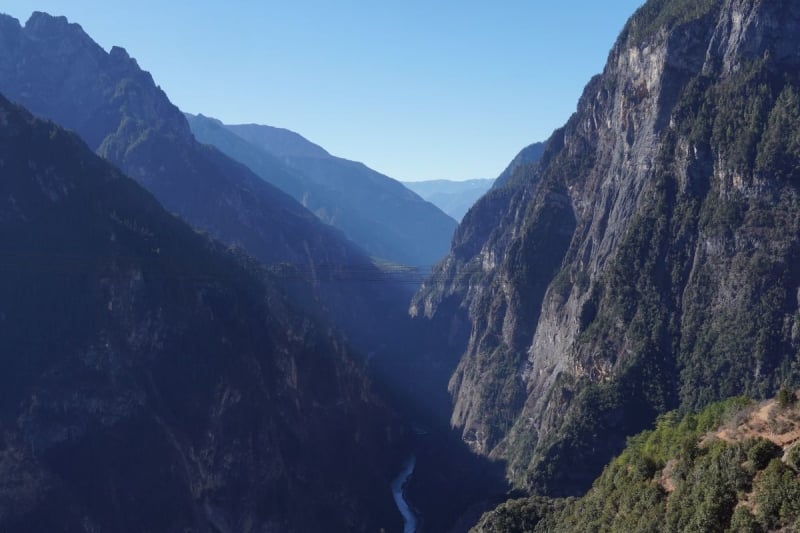
I love mountain silhouttes.
In the afternoon, we drove about 1.5 hours out to Balagezong Scenic Area. I heard from the locals that this place was not very popular, which was so surprising to me.
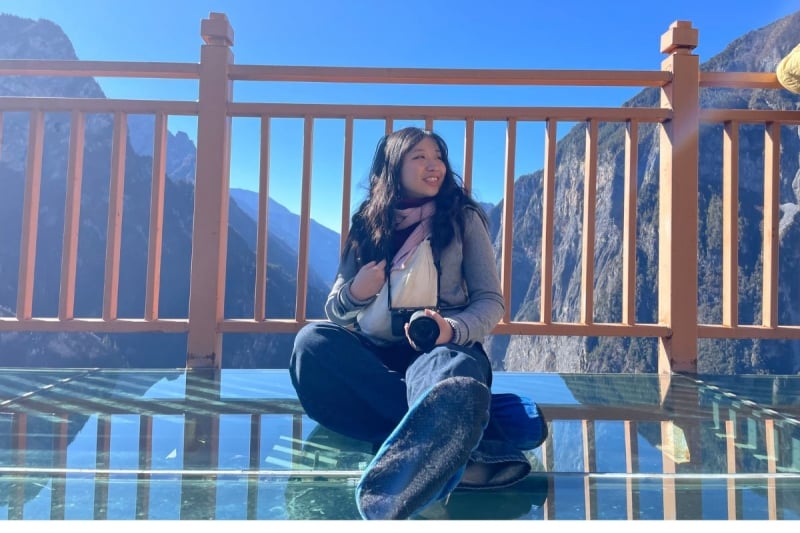
My legs were shaking here.
The infrastructure was so impressive, with long winding roads up the massive canyons, snow-capped mountains, rivers cutting through steep cliffs, and even a glass walkway that lets you hover over the gorge. To be fair, it was pretty empty when we were there, which was nice for us to explore, but I do think this place deserves way more hype.
We even got to see the colourful Tibetan flags with the backdrop of the snow mountains!
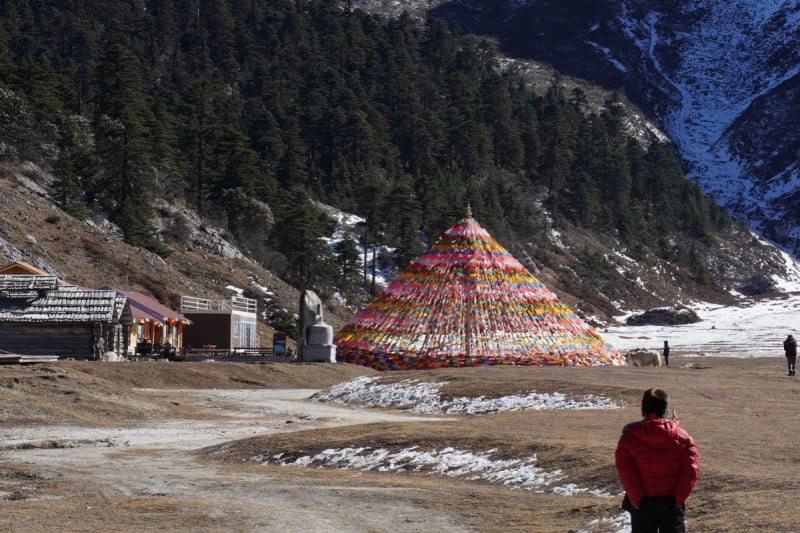
This place felt so serene.
Other standout spots include the Balagezong Grand Canyon with its towering cliffs and turquoise rivers, as well as the Thousand-Year-Old Bodhi Tree that is still standing in a small village surrounded by mountains

The zipline was not at all as scary as it looks, trust me. Even my 60-year-old father did it and loved it.
There are also activities like ziplining and rafting for the more adventurous, which was really fun. Definitely worth a try!
Day 7: Shangri-La → Kunming → Singapore
Journey back & reflections
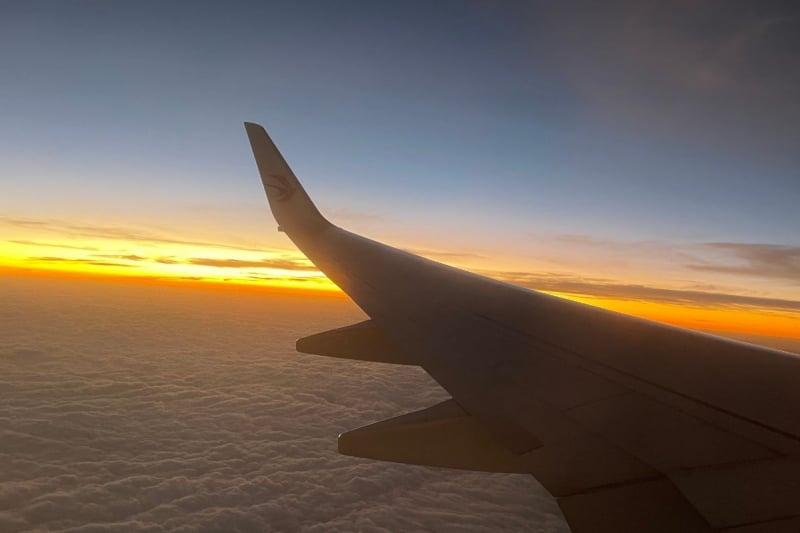
Something about sunrises on a plane is so magical.
And just like that, it was already time to head home. We made the long drive back to Kunming, taking in the last bits of Yunnan’s scenery. From Kunming, we caught our flight back to Singapore, with way too many photos and videos sitting in our phones and a whole new appreciation for a part of China I honestly hadn’t expected to love this much.
Also read: What to Do in Hainan: The Ultimate Travel Guide to the Hawaii of China
Final thoughts
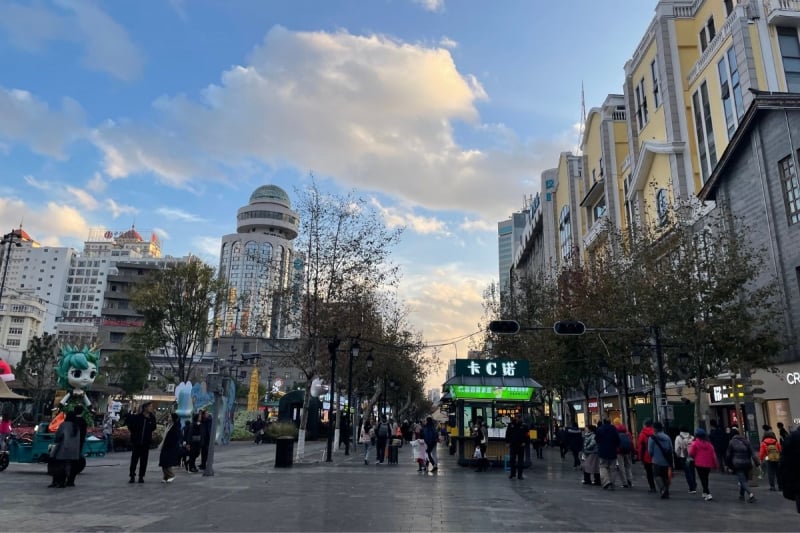
I felt like I barely scratched the surface exploring Yunnan.
If you’ve been thinking about visiting China but don’t quite know where to start, I really can’t recommend Yunnan enough. Between the dramatic mountains, peaceful lakes, and ancient towns, it’s one of those places that quietly takes your breath away at every turn. Plus, only 4 hours from Singapore? Pretty unbeatable.




